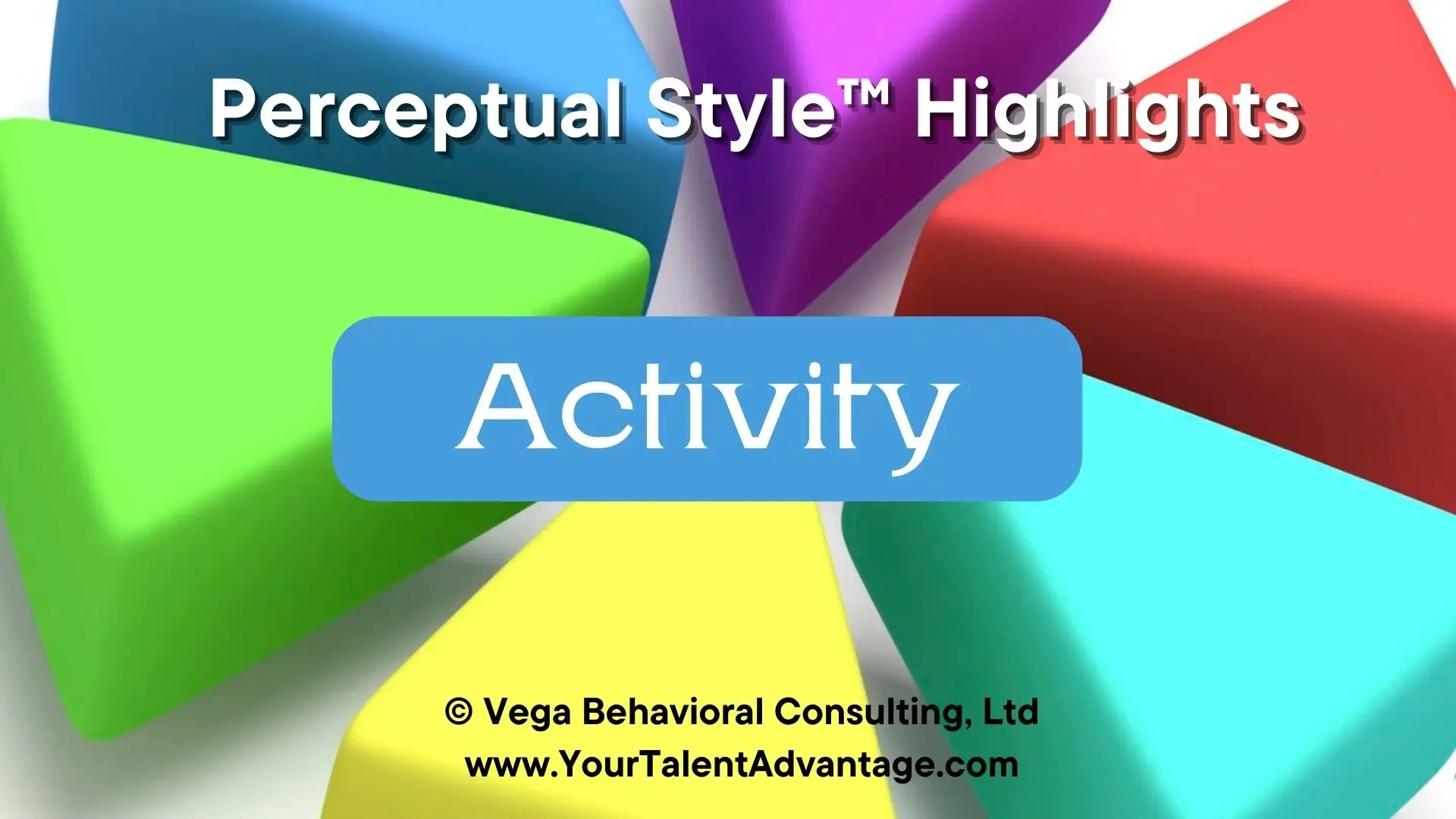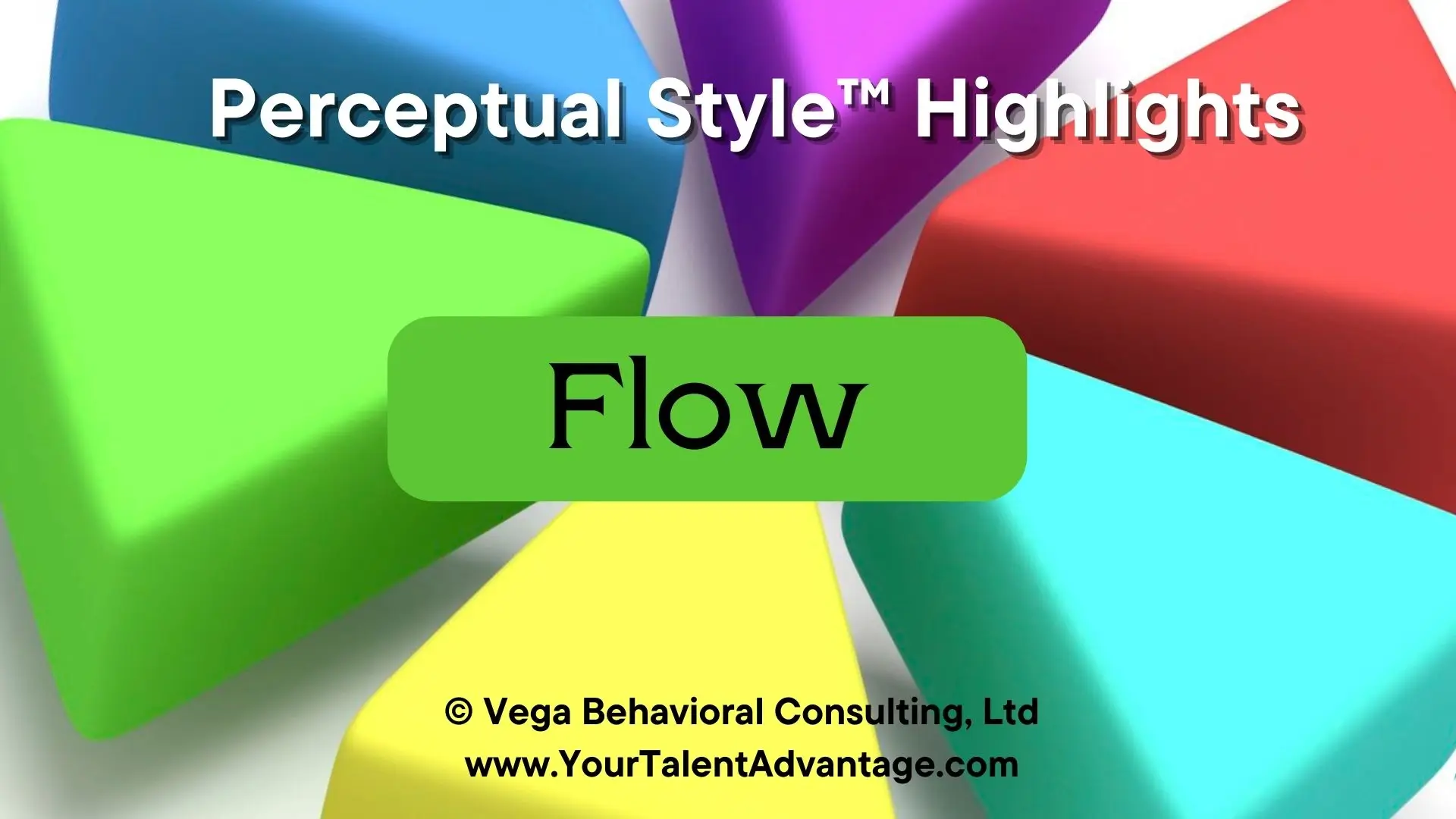
Methods Perceptual Style™ and Collaboration
Structuring Collaboration for Success
Collaboration is a cornerstone of success in families, workplaces, and communities. It’s about more than just working side by side — it’s about aligning efforts, creating systems, and building mutual respect to achieve shared goals.
But effective collaboration isn’t one-size-fits-all. Your natural approach to collaboration is shaped by your Methods Perceptual Style,and you bring logic, structure, and dependability to every group you join.

Why Collaboration Matters
Humans are social by nature. Research consistently highlights that we thrive in community and falter in isolation.
Collaboration isn’t just about splitting tasks — it’s about creating clear plans, aligning efforts, and achieving meaningful results.
When done well, collaboration:
-
Creates clear expectations and accountability.
-
Builds trust through consistency and fairness.
-
Delivers outcomes that are concrete, measurable, and aligned with expectations.
But let’s face it — collaboration isn’t always smooth. Confusion, lack of direction, or mismatched priorities can create frustration. That’s where understanding your Methods Perceptual Style,comes in.
Your Collaboration Superpowers
With the Methods Perceptual Style,you bring structure, fairness, and clarity to collaboration. You focus on realistic outcomes, shared effort, and dependable processes that keep teams moving forward smoothly.
You thrive in collaboration when you can:
-
Rely on clear expectations and defined roles to contribute with confidence.
-
Recognize team members’ skills and contributions, and support alignment with shared objectives.
-
Help maintain consistency and follow-through, especially when others get off track.
-
Foster mutual accountability, where everyone contributes fairly and reliably.
Your consistent, thoughtful approach makes you a valuable and dependable teammate — someone others trust to bring clarity, follow-through, and results.


Why Understanding Your Perceptual Style Matters
Collaboration is one of the most powerful tools for success, but it’s not always smooth sailing. Misunderstandings, mismatched approaches, and clashing priorities can derail even the most well-intentioned efforts.
When you understand your Methods Perceptual Style,you can:
-
Leverage your natural strengths to create structure in team efforts.
-
Avoid frustration by setting clear boundaries and expectations.
-
Maintain focus on measurable results.
-
Contribute dependably and consistently to group success.
When you lean into your strengths, collaboration becomes less about dealing with chaos and more about building reliable systems for success.
Take Action: Discover Your Perceptual Style
The Perceptual Style Assessment™isn’t just about identifying your collaborative strengths — it provides practical tools and insights to help you thrive in collaborative settings.
When you take the assessment, you’ll receive:
-
A 45-page Celebrate You!action guide tailored to the Methods Perceptual Style.
-
Clear insights into your collaboration strengths and preferences.
-
Practical strategies for building efficient and effective teamwork.
Stop guessing. Start collaborating with clarity, structure, and confidence.

Explore the Six Perceptual Styles and Collaboration
Curious about how different Perceptual Styleapproach collaboration? Explore below for insights into each unique style::
Understanding your style is just the first step. When you learn to appreciate the strengths others bring to the table, collaboration transforms from a challenge into an opportunity.
Frequently Asked Questions about the Methods Perceptual Style and Collaboration
What does it mean to have the Methods Perceptual Style™?
You experience the world as sensible and workable. Facts matter, order helps, and clear steps turn confusion into progress. You’re at your best when there’s a plan, roles are defined, and you can move from A → B → C with calm, steady follow-through.
What are some of the natural strengths of Methods?
You bring clarity, consistency, and trust. You break complex things into doable parts, set practical expectations, and keep promises. You listen for facts, weigh trade-offs fairly, and design repeatable routines that make life smoother for everyone — at home and at work.
How does the Methods style show up in Collaboration?
You’re a steady teammate. You define who’s doing what by when, match tasks to people’s skills, and keep the group on a realistic timeline—with mutual accountability.
What are a few common blind spots—and how can I manage them?
Because you value logic, strong feelings or “gut calls” can seem impractical — and people may feel dismissed. Try a quick two-step: acknowledge (“I hear this matters to you”) then clarify (“Here’s what the facts suggest we try first”). When plans drift, it’s easy to double-down on process; add a short “Does this still solve the real problem?” checkpoint to keep results — not just routines — front and center.
How can understanding my Methods strengths help me thrive?
Knowing your Perceptual Style helps you build a life that fits — clear roles, realistic timelines, and environments where fairness and reliability are valued. You can design simple systems (family schedules, home projects, shared checklists) that reduce stress for everyone, and you can pair your steady pace with brief moments of flexibility when circumstances change. That balance turns structure into support, not constraint.
Can my Perceptual Style change over time?
No — your Perceptual Style is innate. What evolves is how you apply it. As your awareness grows, you’ll refine when to lead with process and when to flex, so your strengths land even better with the people around you.





